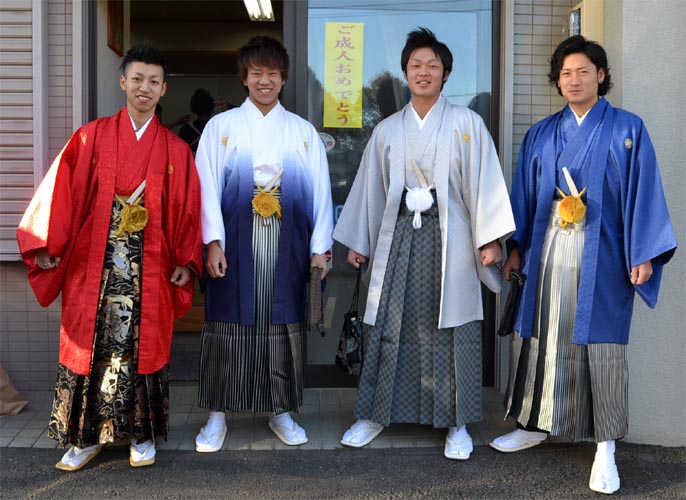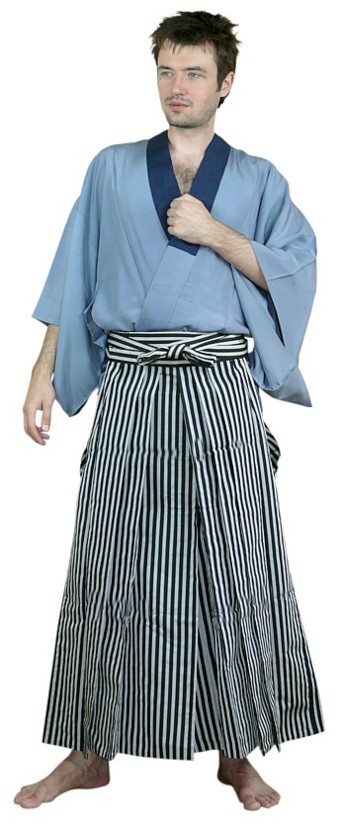Hakama Japanese Traditional Clothing Male

This traditional garment used to be part of a samurai s.
Hakama japanese traditional clothing male. Like tomesode kuro black montsuki is higher than iro color montsuki. The light gray x navy for men is said to exude a refined sense of elegance. Hakama are a type of traditional japanese clothing resembling a wide pleated skirt. It is notably wide legged and has several pleats.
Hakama are a traditional japanese garment that are worn over kimono. Today men are more likely to wear hakama under their kimono on formal and informal occasions while women typically only wear the garment for graduation ceremonies and when performing traditional japanese sports like aikido and kendo. Compared with a female the types of kimono for a man are not many.
The definition of hakama. Montsuki with a family crest haorihakama is the highest rank male kimono. They are suitable to wear when practicing aikido or other budo. They are worn over a kimono hakamashita.
There normally are two main versions of this but both are akin to skirt like pants with one of them having a division. Think of them as longer flowy trousers. Hakama were mainly worn by men in the past as they made it possible for people to ride horses and run easily however they were not exclusively worn by men. Most of the bloom wear kuro montsuki.
A hakama is a traditional formal japanese apparel. Size m height 160cm 165cm l height 165cm 170cm ll xl height 175cm 175cm. Traditional hakama pants are skirt like pants. They are tied around the waist and extend down to the ankles hakama may be open like a skirt or may have legs like pants.
Over time the place of the hakama in japanese society shifted. The purple dark grey gives the traditional garment a modern twist especially when worn with accessories like a hat and glasses. Though they were standard fare for samurai and those participating in shinto rituals or associated with shrines the majority of farmers and trade workers or merchants did not wear hakama. It s made from cotton fabric.
They were historically worn only by men.

















